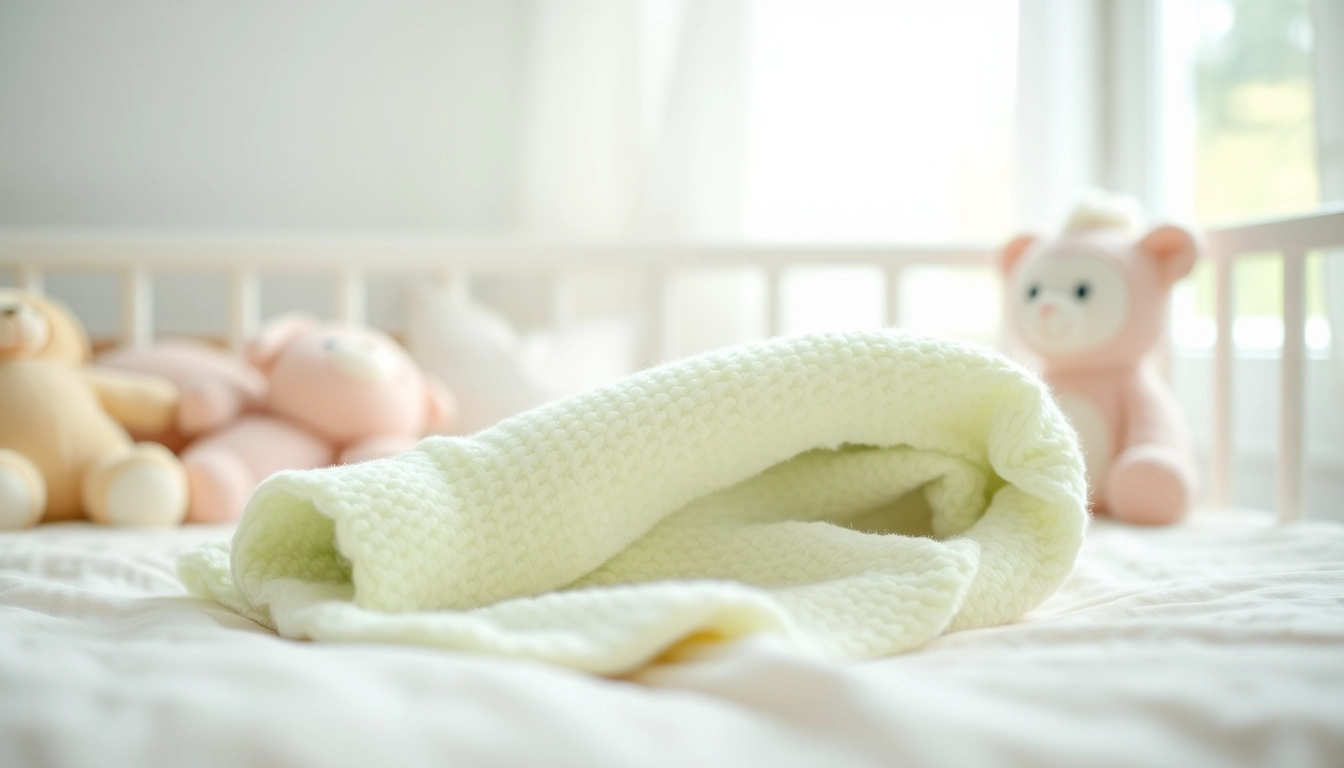Understanding the Importance of a Baby Blanket
When it comes to nurturing and caring for your little one, a Baby blanket is more than just a soft piece of fabric. It represents comfort, security, and warmth, becoming a staple in your baby’s early life. From bedtime snuggles to on-the-go naps, the right baby blanket can play an essential role in a child’s development and well-being. Understanding the importance of a baby blanket helps parents make informed choices that contribute to their child’s comfort and happiness.
Why Every Baby Needs a Special Blanket
The bond between a baby and their blanket is often one that brings comfort and joy. Special blankets can provide a sense of security, helping babies feel safe and calm. The familiar texture and scent can ease anxiety during new experiences, such as sleeping in a crib for the first time or transitioning to a new environment.
A baby blanket also serves practical purposes. It can be used for swaddling, which is essential for young infants to help them feel secure and reduce the likelihood of startling during sleep. As babies grow, these blankets can also transition into comforting companions, aiding children as they navigate the world.
Key Features to Look for in a Baby Blanket
When selecting a baby blanket, several key features should be considered to ensure optimal comfort and safety:
- Material: Choose soft, hypoallergenic fabrics that are gentle against a baby’s sensitive skin.
- Size: The blanket should be large enough for swaddling but not too large that it poses a safety risk.
- Weight: Opt for lightweight materials that provide warmth without overheating.
- Washability: A blanket that can withstand frequent washing will maintain hygiene and quality.
Safety Considerations for Baby Blankets
Safety is paramount when it comes to baby products, and baby blankets are no exception. Ensuring the blanket is free from loose threads or decorations that can pose choking hazards is crucial. Additionally, lightweight blankets are preferable as they reduce the risk of overheating. Always adhere to safe sleep guidelines, which recommend avoiding the use of blankets in the crib until a baby is at least one year old. Instead, consider swaddlers that are specifically designed for infants.
Types of Baby Blanket Materials
Selecting the right material for a baby blanket is essential not only for comfort but also for practical use. Different fabrics offer varying benefits that can enhance a baby’s experience.
Cotton vs. Synthetic Fabrics
Cotton is a popular choice due to its natural breathability and softness. It allows for air circulation, helping to maintain a comfortable temperature for the baby. On the other hand, synthetic fabrics can offer moisture-wicking properties and increased durability. However, some synthetic fibers may irritate sensitive skin, making it essential to consider the baby’s needs when selecting between these materials.
The Benefits of Organic Baby Blankets
Organic baby blankets are increasingly favored by parents who want to minimize their child’s exposure to harmful chemicals. Made from sustainable materials, these blankets are often grown without pesticides or synthetic fertilizers, making them a healthier choice for babies. Additionally, organic materials typically undergo less processing, preserving their natural softness and breathable qualities.
Choosing Breathable Materials for Comfort
Breathability is critical in maintaining a safe and comfortable sleeping environment. Materials like cotton muslin are exceptionally breathable, allowing air to circulate while keeping babies warm. This is particularly important during naptime or sleep when overheating can become a concern. Blankets designed with a weave that promotes airflow offer both comfort and peace of mind for parents.
Blanket Sizes and Usage
The versatility of a baby blanket extends to its size and various applications throughout a child’s early years.
Understanding Different Blanket Sizes
Baby blankets come in various sizes, and understanding these options can help parents choose the best fit for their needs. Standard crib blankets typically range from 30×40 inches, which is perfect for covering a crib mattress and providing warmth without the risk of entanglement. Larger blankets may be suitable for older children, allowing them to wrap themselves fully for cozy comfort.
Using Baby Blankets for Swaddling
Swaddling is a time-honored practice to provide infants a sense of security that mimics the womb environment. A baby blanket can be used effectively for swaddling, helping to prevent startle reflexes that may disrupt sleep. It’s essential to learn proper swaddling techniques to ensure the blanket is snug but not too tight, allowing for healthy hip development.
Other Uses: Nursing and Comforting
Beyond sleep, baby blankets serve many functions. They can act as nursing covers, providing privacy and comfort for breastfeeding mothers. Moreover, blankets can offer a familiar feeling during outings, helping to comfort babies in new surroundings. These multi-functional uses make a good quality baby blanket an invaluable asset for any parent.
Care and Maintenance of Baby Blankets
Proper care and maintenance of a baby blanket can significantly extend its life and maintain its comforting qualities. Understanding how to clean and store these items is crucial for hygiene and longevity.
Washing and Drying Instructions
Most baby blankets can be machine washed, but it’s important to adhere to specific washing instructions to avoid damage. Cold water washes are generally recommended, with mild detergents that are free from harsh chemicals. Avoid fabric softeners that can hinder the blanket’s natural softness and breathability. Air drying is preferable, but if a dryer is necessary, use a low-heat setting to preserve the blanket’s fibers.
How to Keep Your Baby Blanket Soft Over Time
To keep a baby blanket soft over time, it’s essential to treat it gently. Avoid frequent washing unless necessary and consider washing it alongside similar fabrics to prevent pilling. For cotton blankets, adding a cup of white vinegar during the rinse cycle can help maintain softness without harsh chemicals.
Storing Baby Blankets to Maintain Quality
Proper storage of baby blankets can significantly influence their longevity. Store blankets in a cool, dry place, away from direct sunlight to prevent fading. Using breathable storage bags or bins can protect blankets from dust while allowing air circulation. Avoid compressing or tightly folding the blankets, which can lead to creases and damages in the fabric quality.
Personalized Baby Blankets as Unique Gifts
Personalized baby blankets make exceptional gifts for celebrations such as baby showers and birthdays, adding a unique touch that signifies thoughtfulness and care.
The Appeal of Customized Baby Blankets
A customized baby blanket adds a special layer of sentimentality. Parents appreciate the thoughtfulness of initials, names, or even meaningful dates stitched into the fabric, creating a keepsake that can last a lifetime. Personalized items often become treasured family heirlooms that encapsulate precious memories.
Ideas for Personalized Baby Blanket Designs
There are endless possibilities for personalizing baby blankets. Consider options like embroidered names, themed designs that reflect family interests, or quilts that represent cultural heritage. Patterns that include growth milestones or printed quotes can also add a unique flair while creating something meaningful for the family.
Where to Find Quality Personalized Options
When searching for personalized baby blankets, numerous online retailers offer customization options. Look for shops that focus on quality materials and craftsmanship, ensuring that the blanket will withstand the test of time. Reading reviews can also provide insight into other customers’ experiences, guiding you toward making the right choice.



